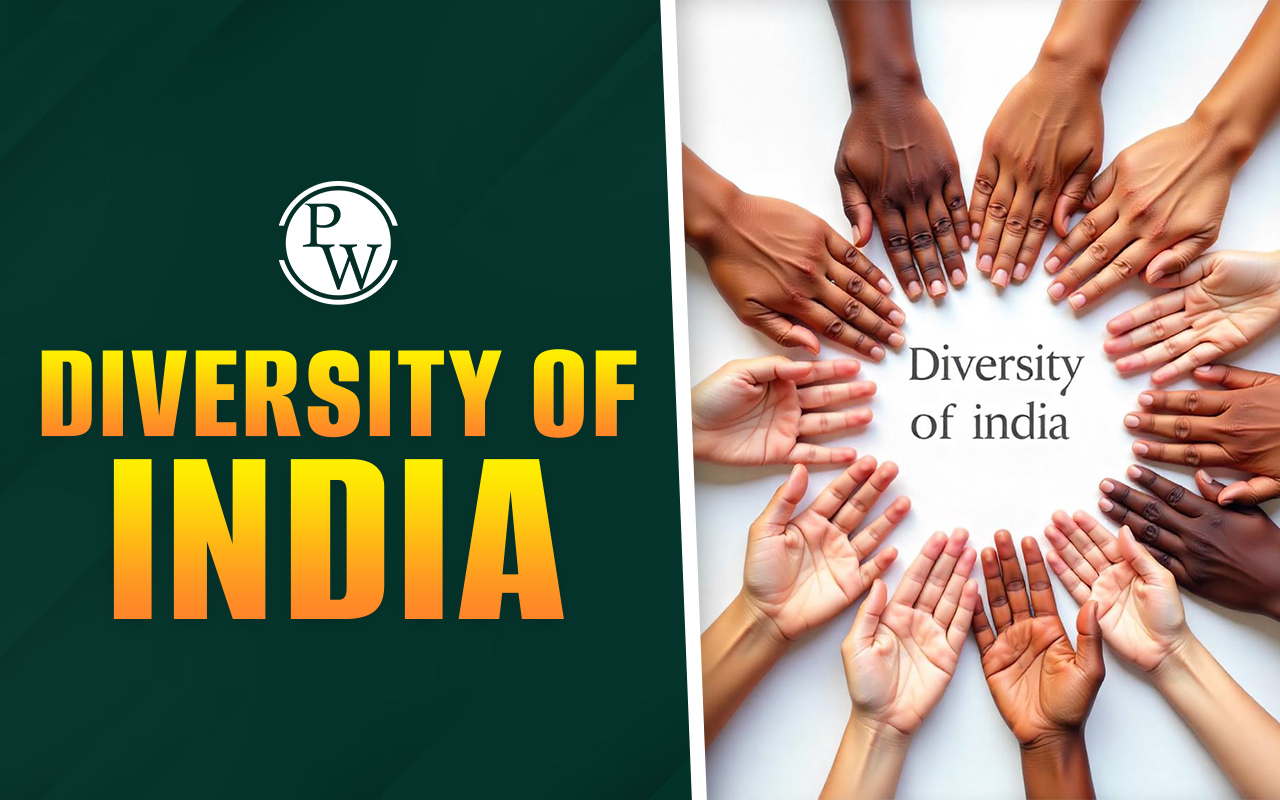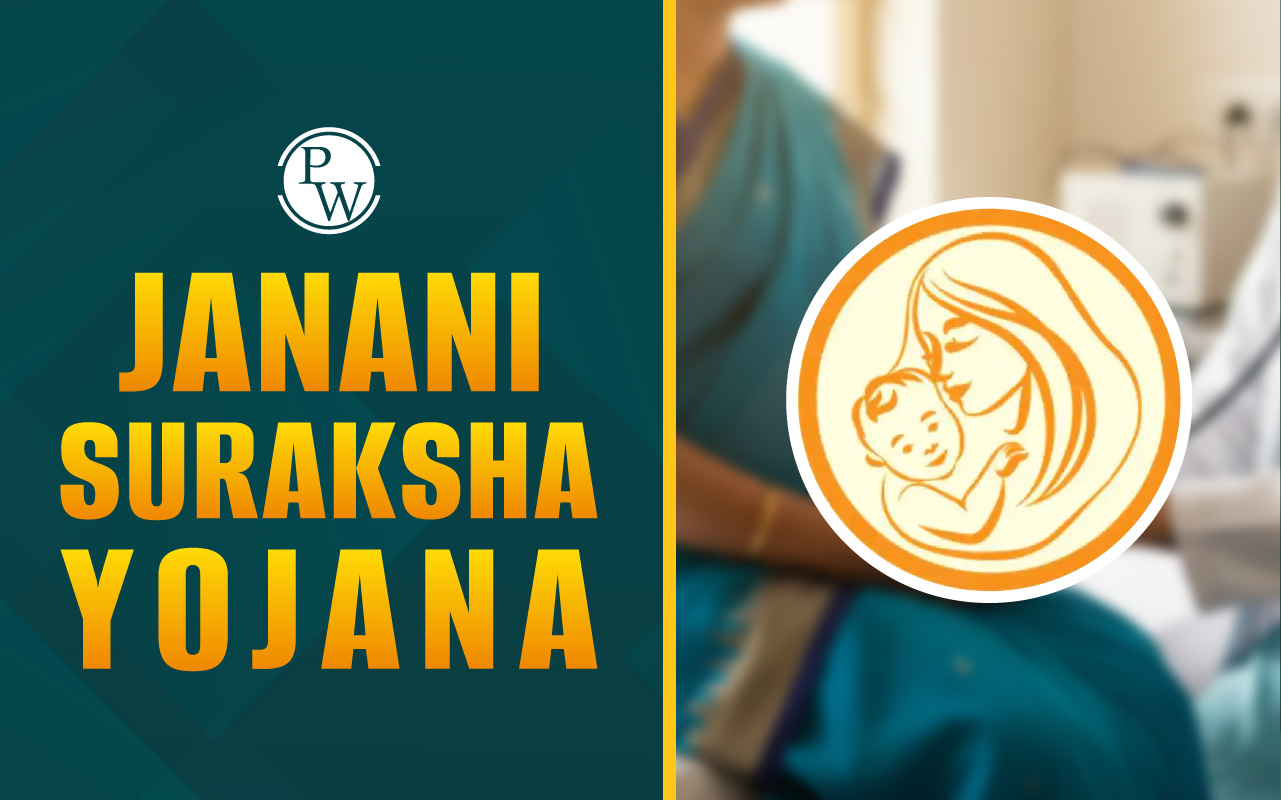
Diversity of India is one of the country’s most remarkable features, reflected in its variety of languages, religions, cultures, and traditions. From the vibrant festivals of the north to the unique art forms of the south, every region has its own distinct identity. This diversity is also seen in India’s geography, climate, and natural resources. Together, these differences create a rich and colourful tapestry, making India a unique nation where unity thrives amid diversity.
Diversity of India
Diversity simply means 'difference' and refers to the presence of a wide range of differences among people within a given community or nation. In the context of India, this difference manifests across numerous dimensions, distinguishing one group from another.
India's unique approach is captured by the phrase 'Unity in Diversity,' which signifies "diversity without fragmentation" and "unity without uniformity". Despite the numerous differences, a fundamental spirit of oneness prevails, binding the people together under a single, cohesive cultural whole.
Dimensions of Indian Diversity
The Diversity in India can be comprehensively categorised into the following major forms:
Geographical Diversity in India
India's physical geography is characterised by extreme variations, which have historically influenced the culture and lifestyle of the people in different regions.
-
Physiography: The country features towering mountain ranges like the Himalayas in the North, vast Indo-Gangetic plains, the arid Thar Desert, the ancient Deccan Plateau, and extensive coastlines along the Arabian Sea and the Bay of Bengal.
-
Climate: India encompasses a range of climatic zones, from the permanently snow-clad regions of the North to the hot, humid coastal areas and the composite monsoon-dominated regions. These differences lead to variations in agriculture, staple food, and clothing.
-
Biodiversity: India is recognised as one of the world's 17 megadiverse countries, hosting approximately 8% of all recorded species, highlighting its immense ecological diversity.
Linguistic Diversity in India
Language is a profound marker of cultural identity and diversity in India.
-
Scale: India is a land of multiple languages, boasting 22 scheduled languages and over 1,600 dialects and mother tongues.
-
Language Families: Indian languages belong to four major families:
-
Indo-European: Predominantly spoken in North and West India (e.g., Hindi, Bengali, Marathi, Punjabi).
-
Dravidian: Predominantly spoken in South India (e.g., Telugu, Tamil, Kannada, Malayalam).
-
Austric: Tribal languages (e.g., Santhal, Munda).
-
Sino-Tibetan: Languages of the North-Eastern regions (e.g., Sikkimese, Bodo).
-
Multilingualism: The linguistic diversity fosters cognitive flexibility and adaptability among its citizens, who often speak multiple languages.
Religious Diversity in India
India is a secular state and a cradle of diverse religious practices, often referred to as a land of religious pluralism.
-
Origin of Religions: India is the birthplace of four major world religions: Hinduism, Buddhism, Jainism, and Sikhism.
-
Major Religions: Besides the indigenous faiths, the country is home to followers of Islam, Christianity, Zoroastrianism, and Judaism, all coexisting peacefully.
-
Internal Pluralism: Significant diversity exists even within major religions; for instance, Hindus are divided into various sects like Vaishnavas and Shaivites, and Muslims into Shia and Sunni sects.
Racial/Ethnic Diversity in India
India's population is an admixture of several ethnic groups, resulting from historical migrations and geographical isolation.
-
Major Groups: The population is primarily an admixture of Indo-Aryans (mostly in the North), Dravidians (mostly in the South), and Mongoloids (in the North-East).
-
Tribal Communities: The country is also home to a large number of tribal groups, such as the Proto-Australoid and Negrito groups, each with distinct cultures preserved by isolated forests and hilly tracts.
Social Diversity in India (Caste and Family)
Social diversity is most evident in the complex structure of Indian society.
-
Caste System: The caste system, a hierarchical arrangement of social groups, is a unique feature of Indian society, with over 3,000 Jatis existing across different regions. The system is not confined to Hindus alone, with similar caste hierarchies existing among Muslims, Christians, and Sikhs.
-
Family Structure: There is diversity in family structures and marriage customs, with practices varying widely from north to south and across communities.
Cultural Diversity (Festivals, Cuisine, Art)
The tangible expression of India's diversity is its rich cultural heritage.
-
Festivals: Festivals serve as a powerful binding force. People from all cultural backgrounds celebrate festivals like Diwali, Holi, Eid, Christmas, Onam, and Baisakhi, reflecting a shared composite culture.
-
Cuisine: Indian cuisine changes dramatically every few kilometres. From the spicy curries of the South to the tandoori dishes of the North, and from the seafood of the coasts to the temperate food of the mountains, this culinary diversity is unparalleled.
-
Arts: The nation boasts a wealth of classical dance forms (like Bharatanatyam, Kathak), folk dances, classical music, and architectural marvels (from ancient cave temples to Mughal structures), all reflecting different regional and historical influences.
Elements of Unity in India's Diversity
Despite profound diversity, India has maintained a remarkable sense of cohesion and national integration. Several factors act as strong bonds of unity:
-
Constitutional Identity: The single Constitution of India, which applies uniformly to all states, provides a common framework of law, rights, and duties for all citizens. It ensures Fundamental Rights like equality and freedom for all, regardless of background.
-
Geographical Unity: The Himalayas in the North and the surrounding seas define India as a single, distinct geographical unit, known historically as 'Bharat Varsha'.
-
Historical Unity: The rule of great empires like those of Ashoka and Akbar, and later the unifying effect of British colonial rule and the subsequent National Movement, created a shared historical experience and political integration.
-
Economic Integration: A single market, a unified currency, and common economic policies ensure inter-regional economic interdependence, which is a key pillar of national unity.
-
Institution of Pilgrimage: The tradition of visiting holy sites across the length and breadth of the country (e.g., Char Dham, Jyotirlingas) promotes cultural exchange and fosters a sense of shared religious geography.
Constitutional and Legal Safeguards for Diversity in India
The Indian Constitution provides a robust framework to protect and promote diversity and maintain national unity.
|
Constitutional and Legal Safeguards for Diversity in India |
|
|
Constitutional Provision |
Focus/Purpose |
|
Preamble |
Declares India a 'Secular' republic, ensuring the state treats all religions equally. |
|
Article 14-16 |
Guarantees Equality before the law and prohibits discrimination on grounds of religion, race, caste, sex, or place of birth. |
|
Article 17 |
Abolishes untouchability, a protective measure against one of India's historical social divisions. |
|
Article 25 |
Guarantees freedom of conscience and free profession, practice, and propagation of religion. |
|
Article 29 |
Grants any section of citizens with a distinct language, script, or culture the right to conserve the same. |
|
Article 30 |
Grants religious and linguistic minorities the right to establish and administer educational institutions of their choice. |
|
Article 51A (e) (Fundamental Duty) |
Stipulates the duty of citizens to promote harmony and the spirit of common brotherhood, transcending religious, linguistic, and regional diversities. |
|
8th Schedule |
Lists the 22 languages recognised by the Constitution, thereby recognising linguistic diversity. |
Challenges to India's Unity in Diversity
While unity in diversity is the country's strength, certain challenges occasionally threaten the national fabric.
-
Communalism: The mobilisation of people around a religious identity, which often leads to conflict and distrust between communities.
-
Regionalism: The excessive emphasis on the interests of a particular region over the nation's interests, sometimes fueling separatist tendencies and inter-state disputes.
-
Linguism: Conflicts or political mobilisation based on linguistic identity, as seen in historical demands for state reorganisation.
-
Casteism: The continued prevalence of caste identities, leading to social inequalities and discrimination, which undermine the principle of equality.
-
Globalisation's Impact: The rise of a global consumer culture is often seen as a risk that could dilute traditional, unique cultural practices, especially among the youth.
Diversity of India FAQs
What are the major types of Diversity in India for UPSC preparation?
How many official languages are there to reflect India's linguistic diversity?
What constitutional provision protects cultural diversity in India?
What is the 'Unity in Diversity' concept regarding India's diversity?
How does geographical diversity influence the culture and food of India?










